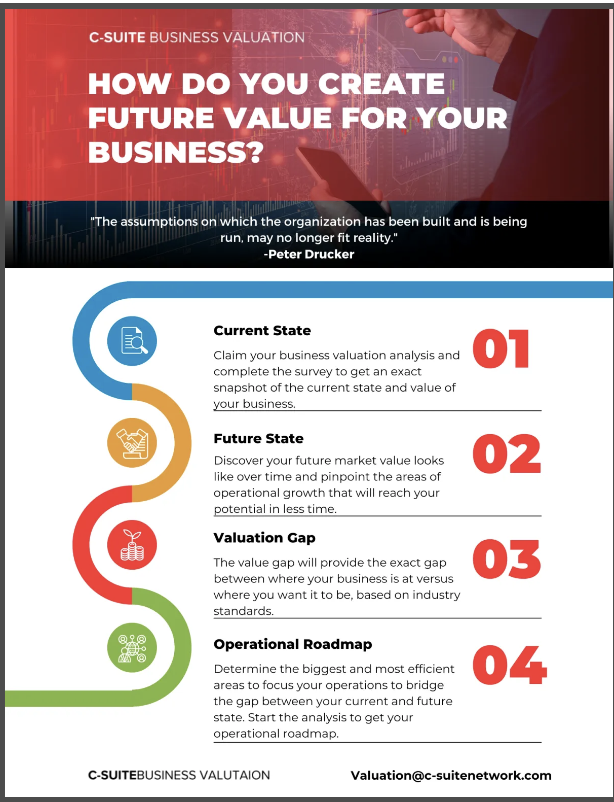Business Networking Events

We are often asked what makes a good business networking event?
A successful networking event is one that facilitates meaningful connections, exchanges of ideas, and potential business opportunities among its attendees. To achieve this, several key elements are typically considered but none probably more important than the KeyNote Speaker you Hire or is the authority in the space to set the tone of the event!
- Clear Purpose and Audience Targeting: The event should have a clear purpose, whether it’s connecting professionals within a specific industry, fostering collaborations, or sharing knowledge. Knowing the audience and targeting the event accordingly helps in creating relevant and valuable interactions.
- Effective Planning and Organization: Good planning is crucial. This includes choosing the right venue, date, and time; ensuring reliable logistics; and preparing an agenda that balances structured activities with open networking time.
- Engaging and Relevant Content: If the event includes speakers or panel discussions, the content should be engaging and relevant to the audience. This can stimulate conversation and provide common ground for attendees.
- Facilitation of Interactions: Effective networking events facilitate interactions among attendees. This might involve ice-breaker activities, structured speed networking sessions, or using technology like networking apps that help attendees connect based on shared interests.
- Comfortable and Accessible Environment: The physical or virtual space should be conducive to networking. For in-person events, a comfortable venue with good acoustics and layout is important. For virtual events, an easy-to-navigate platform that allows for smooth interaction is key.
- Opportunities for Follow-Up: Providing opportunities for attendees to follow up with each other after the event can extend its value. This could be through sharing contact information, providing a participant directory, or organizing post-event online groups or forums.
- Diverse and Inclusive Atmosphere: Ensuring the event is inclusive and welcoming to people of diverse backgrounds can greatly enhance the networking experience. This includes considering accessibility, language, and cultural inclusivity.
- Effective Promotion: To attract the right attendees, effective promotion through the right channels is essential. This can include social media, industry newsletters, and partnerships with relevant organizations.
- Feedback Collection: Post-event feedback from participants can provide valuable insights for improving future events.
- Professional Networking Facilitators: Having skilled facilitators or hosts who can guide the event, make introductions, and keep energy levels high can significantly enhance the experience.
- Measurement of Success: Define and measure success metrics, such as the number of attendees, the quality of interactions, or subsequent business collaborations that arose from the event.
A successful networking event is one where participants leave feeling that they have made valuable connections, gained insights, and found potential opportunities for collaboration or business. The event’s success is often seen in the quality of interactions and the long-term professional relationships that develop from these connections.
Checklist for starting networking event:
Starting a networking event requires careful planning and attention to several key elements to ensure its success. Here’s a checklist to help guide you through the process, you can also leverage the C-SUITE NETWORK platform for framework and scale!
- Define the Purpose and Objectives:
- Determine the goal of the event (e.g., connecting professionals, sharing knowledge).
- Identify the target audience (industry, profession, level of experience).
- Event Planning:
- Set a date, time, and duration for the event.
- Choose an appropriate venue for an in-person event or a reliable platform for a virtual event.
- Plan the event format (open networking, structured activities, speaker sessions).
- Determine the budget and financial aspects (sponsorships, ticket sales).
- Event Logistics:
- Arrange catering and refreshments if applicable.
- Organize audio/visual equipment and any necessary technical support.
- Plan the layout of the venue for optimal networking.
- Ensure accessibility for all attendees.
- Marketing and Promotion:
- Create an event name and branding.
- Develop promotional materials (flyers, website, social media posts).
- Identify channels for promotion (email lists, social media, industry groups).
- Open registration and manage attendee list.
- Engagement Strategies:
- Plan icebreaker activities or networking games.
- Consider having a keynote speaker or panel to provide valuable content.
- Use technology like networking apps or social media hashtags to enhance interaction.
- On the Day of the Event:
- Arrive early to set up and troubleshoot any issues.
- Have a check-in process for attendees.
- Provide name tags or other identification to facilitate introductions.
- Ensure there are staff or volunteers to assist attendees and manage the event flow.
- Facilitation and Hosting:
- Welcome attendees and explain the format of the event.
- Facilitate introductions and interactions, especially if attendees seem hesitant.
- Keep track of time and guide the event according to the schedule.
- Follow-Up After the Event:
- Send thank-you emails to attendees and any speakers or sponsors.
- Share contact information or networking directories if appropriate.
- Request feedback through surveys or informal conversations.
- Analyze the event’s success and identify areas for improvement.
- Maintaining Connections:
- Encourage ongoing networking and connections post-event.
- Consider creating online groups or forums for attendees to keep in touch.
- Plan future events or follow-up gatherings if applicable.
Remember, the key to a successful networking event is creating an environment where attendees can comfortably connect and engage with each other. Tailor your approach based on the specific needs and interests of your target.
Networking Event Management Technology
Incorporating the right technology can greatly enhance the effectiveness and reach of your networking event. Here’s a list of different types of technology that you can consider using:
EVENT GROWTH AND FRAMEWORK PLATFORMS LIKE PROVIDED BY C-SUITE NETWORK CREATE AN ECOSYSTEM OF SUCCESS AND SUSTAINABLE GROWTH!
- Event Management Platforms: Tools like Eventbrite, Cvent, or Bizzabo help in managing registrations, ticket sales, and attendee information. They can also provide analytics and post-event data.
- Virtual Meeting Platforms: For online events, platforms like Zoom, Microsoft Teams, or Webex are essential. They offer features like breakout rooms, which are great for facilitating smaller group discussions.
- Networking and Matchmaking Apps: Apps like Brella, Grip, or Swapcard use algorithms to match attendees based on their interests and goals, making it easier for them to connect with the right people.
- Mobile Event Apps: These apps serve as a one-stop-shop for your event, providing schedules, speaker bios, venue maps, and networking features. Attendify and Whova are popular examples.
- Social Media Integration: Using platforms like Twitter, LinkedIn, or Facebook can help in promoting the event, encouraging engagement, and creating a community around your event’s brand.
- Interactive Tools: Polling and Q&A tools such as Slido or Mentimeter engage attendees in real-time, making sessions more interactive and gathering instant feedback.
- Live Streaming Services: If you want to expand your reach, consider streaming your event live on platforms like YouTube Live, Facebook Live, or Vimeo. This is particularly useful for keynote speeches or panel discussions.
- CRM Systems: Customer Relationship Management (CRM) systems can be used to track interactions with attendees before, during, and after the event, helping in follow-up and relationship building.
- Event Feedback Tools: Use online survey tools like SurveyMonkey or Google Forms to gather post-event feedback from participants, which is crucial for measuring success and planning future events.
- Badge and Check-In Technology: For in-person events, technology like QR codes and RFID (Radio-Frequency Identification) can streamline the check-in process and facilitate networking.
- Contact Sharing Apps: Apps that allow for digital exchange of contact information can be a modern alternative to traditional business cards.
- Virtual Reality (VR)/Augmented Reality (AR): For a high-tech touch, VR and AR can be used to create immersive experiences, especially in product showcases or virtual tours.
- Content Management Systems: For distributing event materials, a CMS can be used to share presentations, videos, or documents with attendees.
- Analytics Tools: Post-event, tools like Google Analytics can be used to analyze website traffic and engagement related to the event.
When choosing technology for your networking event, consider the specific needs of your event and audience. The goal is to enhance the experience and facilitate connections, not to overwhelm attendees with technology.
Marketing your networking group:
Growing a networking group involves a combination of strategic marketing, consistent community engagement, and providing value to members. Here are some tips, tricks, and strategies to help you expand and strengthen your networking group:
- Clearly Define Your Value Proposition:
- Clearly articulate what makes your networking group unique and valuable. This could be industry focus, the quality of networking, learning opportunities, or a supportive community.
- Leverage Social Media:
- Use platforms like LinkedIn, Facebook, Twitter, and Instagram to promote your group and its events.
- Share relevant content, success stories, event photos, and member testimonials to engage your audience.
- Use targeted ads to reach potential members in your niche.
- Optimize Digital Presence:
- Create a professional website or landing page with clear information about the group, upcoming events, and membership benefits.
- Implement SEO strategies to increase visibility in search engine results.
- Host Regular Events:
- Organize regular events, both in-person and virtual, to keep members engaged and attract new ones.
- Offer a mix of event types, such as workshops, guest speaker sessions, social mixers, and webinars.
- Provide Value Through Content:
- Regularly share valuable content like articles, industry news, tips, and resources relevant to your group’s focus.
- Consider starting a blog, podcast, or newsletter for regular engagement.
- Encourage Member Referrals:
- Implement a referral program where current members are incentivized to bring in new members.
- Offer rewards or recognition for members who contribute significantly to growing the group.
- Collaborate with Other Groups or Influencers:
- Partner with other networking groups, industry associations, or influencers to co-host events or cross-promote each other.
- This can help in reaching a wider audience.
- Utilize Email Marketing:
- Build an email list to keep members and interested parties informed about upcoming events and news.
- Personalize communication to make members feel valued.
- Gather and Act on Feedback:
- Regularly solicit feedback from members about what they find valuable and areas for improvement.
- Act on this feedback to continuously enhance the group’s offerings.
- Offer Membership Perks:
- Provide members with exclusive benefits such as access to special events, resources, discounts, or mentorship programs.
- Build a Strong Community Spirit:
- Foster a sense of community by encouraging member interaction, collaboration, and support.
- Create online forums or groups where members can connect, share ideas, and offer support.
- Highlight Success Stories:
- Showcase success stories of members who have benefited from the group, such as forming successful business partnerships or achieving career growth.
- Monitor and Adjust Strategies:
- Regularly monitor the effectiveness of your marketing strategies and be ready to adjust based on what works best.
Remember, the key to growing a networking group is to create genuine value for its members and to maintain consistent engagement. A thriving community is built on the foundations of trust, mutual benefit, and shared interests.







